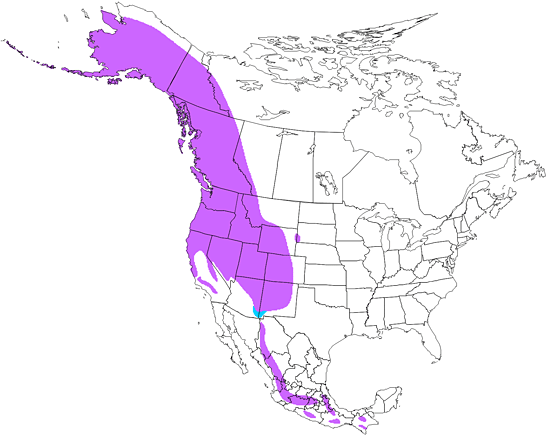American Dipper
Cinclus mexicanus

Upright Perching Water Birds

Length: 8 in. (19 cm )
Found exclusively on rushing mountain streams, this amazing bird is usually seen bobbing up and down on rocks in streams or using its buzzy and fast flight to fly low over the water. It is usually solitary and spends much of its time searching for small fish and aquatic insects while it walks into or even under the water. The Dipper also can use its wings to \fly\ underwater to a depth of 20 ft 6 m) or more. Its domed nest is made of moss and vegetation and placed on a niche of a wet cliff face, bridge abutment or behind a waterfall or cascading stream.
The four-digit banding code is AMDI.
Bibliographic details:
- Article: American Dipper
- Author(s): Dr. Biology
- Publisher: Arizona State University School of Life Sciences Ask A Biologist
- Site name: ASU - Ask A Biologist
- Date published:
- Date accessed:
- Link: https://askabiologist.asu.edu/activities/bird/american-dipper
APA Style
Dr. Biology. (). American Dipper. ASU - Ask A Biologist. Retrieved from https://askabiologist.asu.edu/activities/bird/american-dipper
Chicago Manual of Style
Dr. Biology. "American Dipper". ASU - Ask A Biologist. . https://askabiologist.asu.edu/activities/bird/american-dipper
Dr. Biology. "American Dipper". ASU - Ask A Biologist. . ASU - Ask A Biologist, Web. https://askabiologist.asu.edu/activities/bird/american-dipper
MLA 2017 Style
Be Part of
Ask A Biologist
By volunteering, or simply sending us feedback on the site. Scientists, teachers, writers, illustrators, and translators are all important to the program. If you are interested in helping with the website we have a Volunteers page to get the process started.



